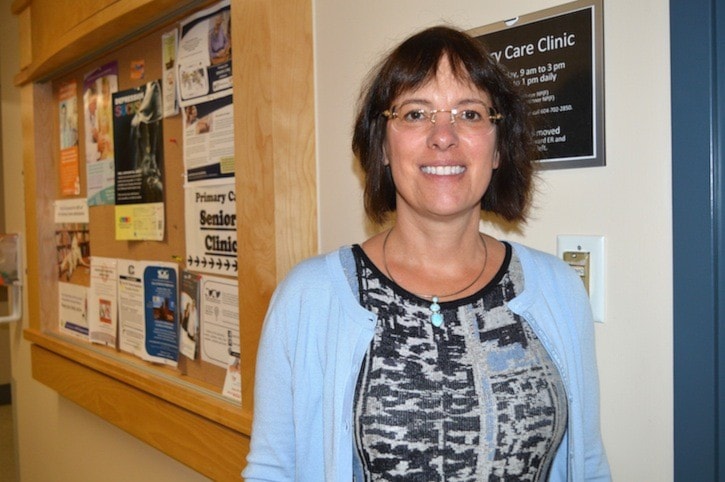Having a regular family doctor can make a big difference in people's lives.
Two local projects focused on connecting people with a GP include the Patient Attachment Mechanism (PAM), and the expansion of the Chilliwack Primary Care Clinic.
And they worked, according to the numbers.
They have cut the number of ER visits, and hospital admissions, while overall patient care has also been improved, according to Dr. Melanie Madill, lead physician of Chilliwack Division of Family Practice.
PAM has managed to connect more than 2,200 patients with GPs from Chilliwack since August 2014 — with "life-changing results" for those with complex care issues, as well as everyday needs.
“The Clinic has been a big success,” says Dr. Madill. “After stabilizing some very vulnerable patients through the clinic, we are able to transition them to family doctors in the community which is changing the frequency of ER visits and hospital stays."
What the clinic did for example is if someone was discharged from CGH, an "orphan" patient without a regular family doctor, they went to the CPCC for followup, and were offered a chance to be linked up permanently with a physician.
They received wrap-around care with the help of doctors, nurse practitioners and other care providers to better manage health issues.
What the PAM line did, aside from creating a one-stop phone number to call, was to allow patients to go through an initial "intake" process. That meant they were getting some care, referrals and even initiating the "matchmaking" process with the right doctor for that patient.
"The nice thing is anyone moving to town would come across the PAM phone number," and they'd call and be referred to the clinic closest to them, and go through the initial intake.
"We had hoped, and we think it's proved to be true, that by doing that, patients would immediately get care in a timely fashion, without having to hunt around to different offices."
Both PAM and the clinic grew out of 'A GP for Me', spearheaded by Chilliwack Division of Family Practice from within Chilliwack General Hospital. The idea was improving access to primary care in Chilliwack, but also Agassiz, Harrison and Hope. In the larger regional perspective, their GP recruitment and retention process has matched 5,000 patients with family doctors.
The process at the clinic allowed the health professionals to gain from patients "a sense of who they are as people," and maybe do a better job of matchmaking with the right doctor for that patient.
Dr. Madill estimates that connecting vulnerable patients with a family physician has resulted in 150 fewer ER visits between August 2014 and June 2016.
How did they do it?
"So we asked all our doctors from the outset if they would take new patients or not, and how many they could incorporate into their practices, what kinds of patients, and encouraged them to indicate their area of interest."
Most had full practices going into the process, but have since taken on new patients. Several took advanced access training, in part to improve the speed at which they could see patients.
There were 1,634 fewer acute-care bed days, meaning time spent in-hospital.
On average, during the first 280 days following their first clinic appointment, a group of vulnerable patients are estimated, per patient, to have avoided 1.3 ER visits, and approximately 19 acute care bed days.
That makes a dramatic difference in the day-to-day lives of these patients.
The CPCC, borne of a partnership between the Chilliwack Division of Family Practice and Fraser Health, is demonstrating how a strong primary care model can benefit the whole health care system, while improving people’s health and lives.
They've had more than two years to chip away at it.
Of course it hasn't solved all the problems, and some are frustrated by growing wait times.
"The success has not been beyond all expectations," said Dr. Madill. "As we had predicted, it's been more even successful than we can keep up with."
They had to take the PAM phone line off service, and there is now a two-month waiting period to be seen by a doctor at the CPCC, or a bit sooner for those just discharged from hospital.
"It's been a bit of a challenge," she said, and that will continue as volumes of patients fluctuate, and the number of GPs is ever-changing.
But the next stage will be working towards a concept called the Primary Medical Home, which emphasizes the core dynamic between the family physician and patient, or the nurse practitioner and the patient.
"That primary care relationship is recognized as being pivotal," she said.
That will guide future efforts.
“We look forward to building on the momentum generated through 'A GP for Me' to engage with our physician members and partners, and leverage resources and infrastructure we’ve established as we move towards an expanded and integrated system of care that wraps around patients and their families.”
